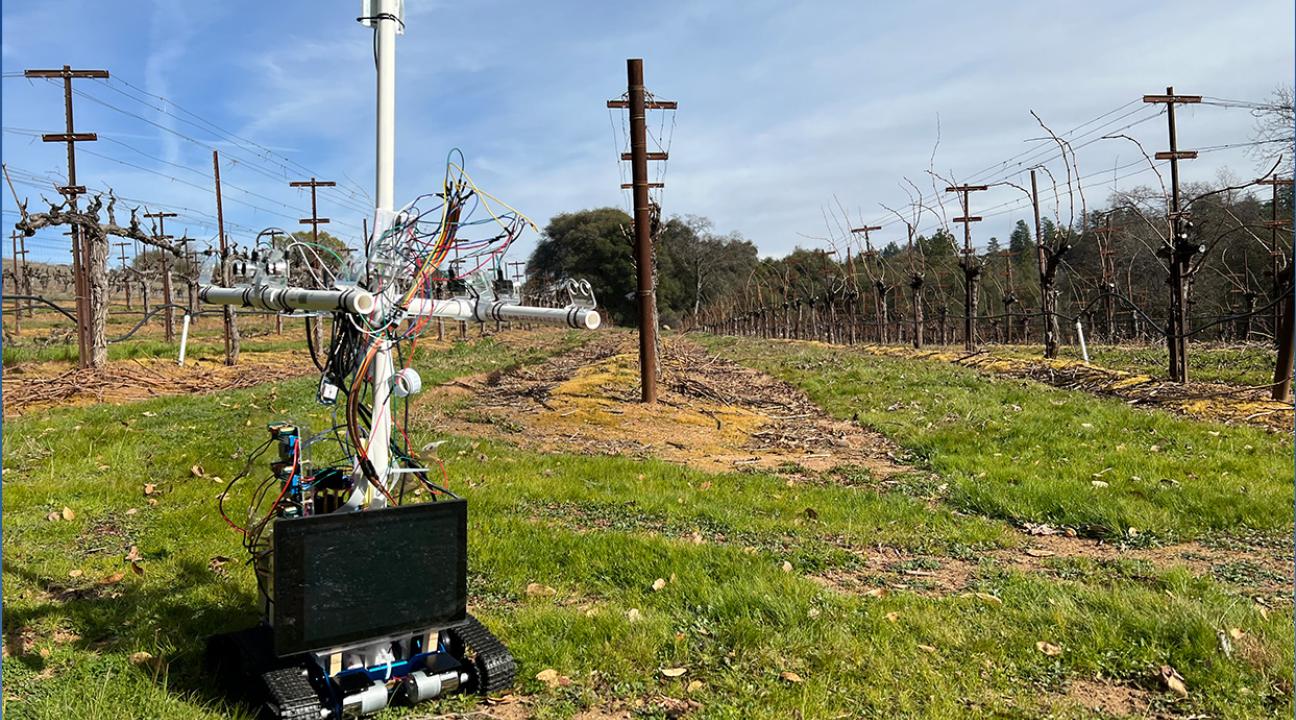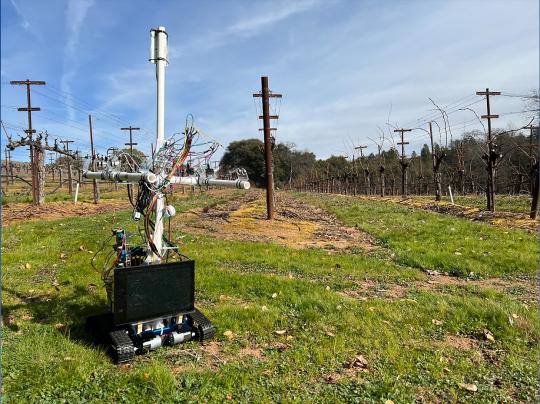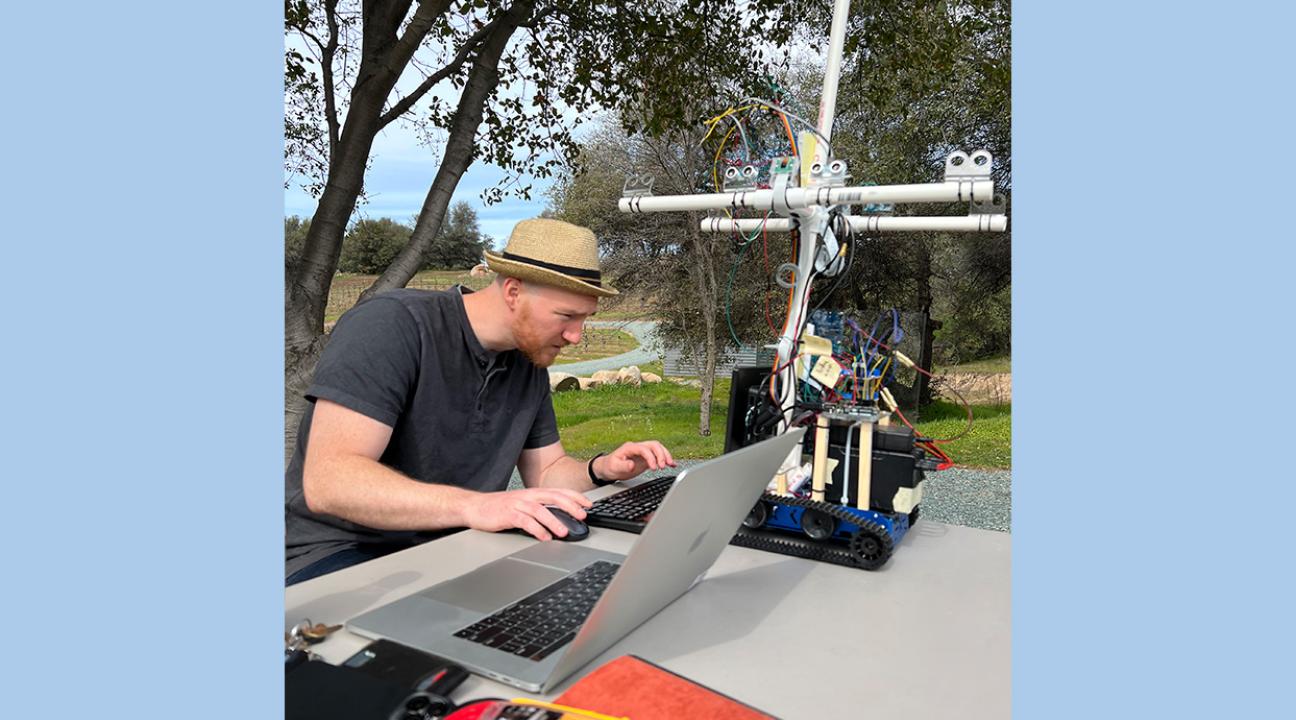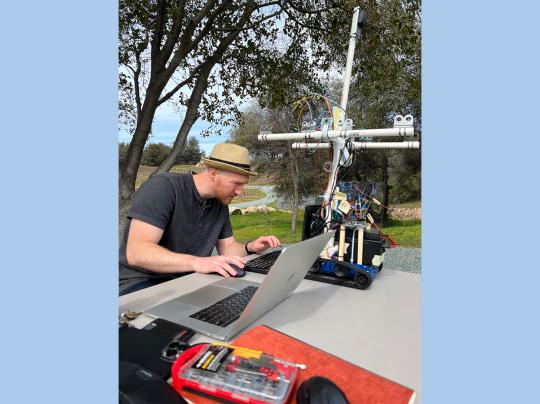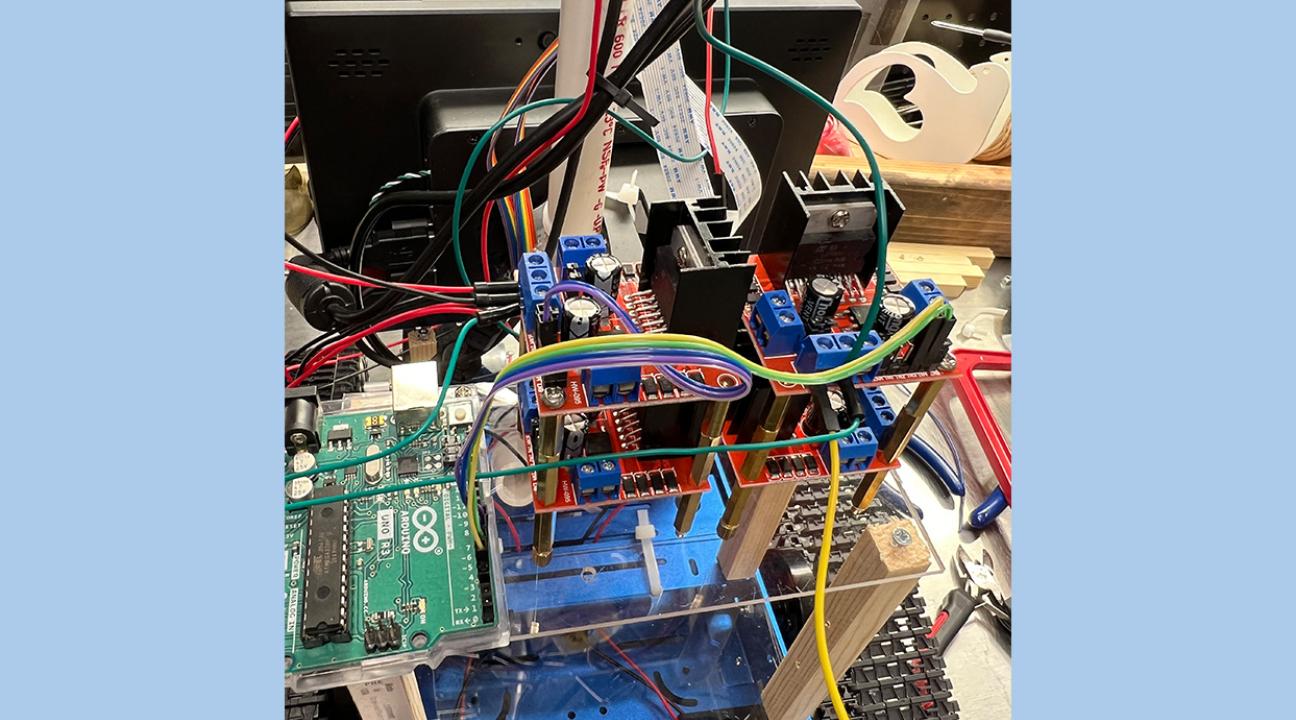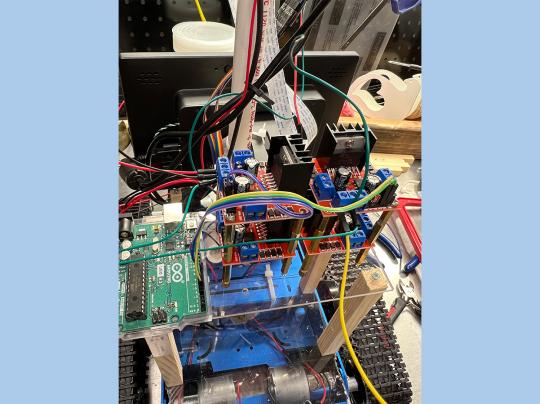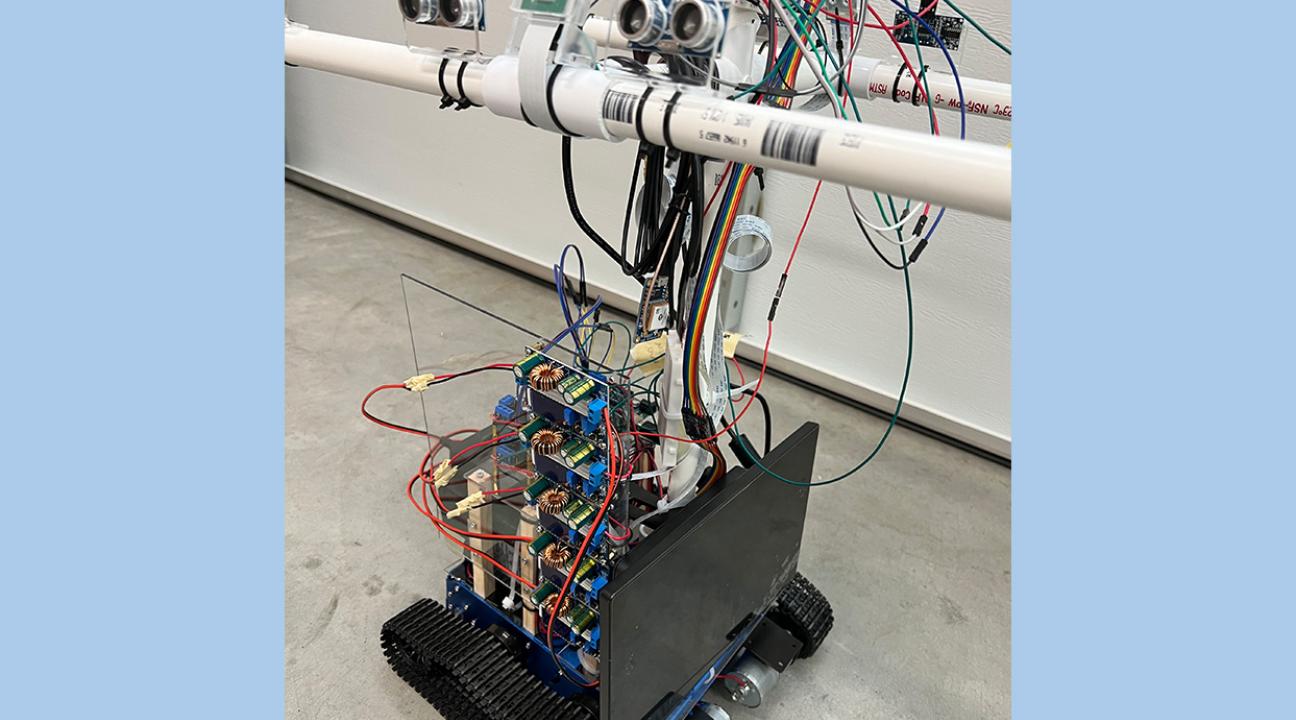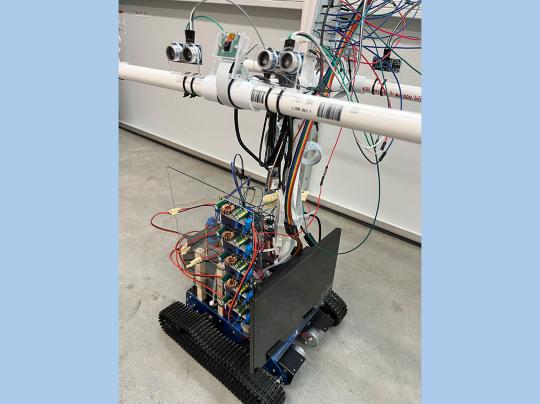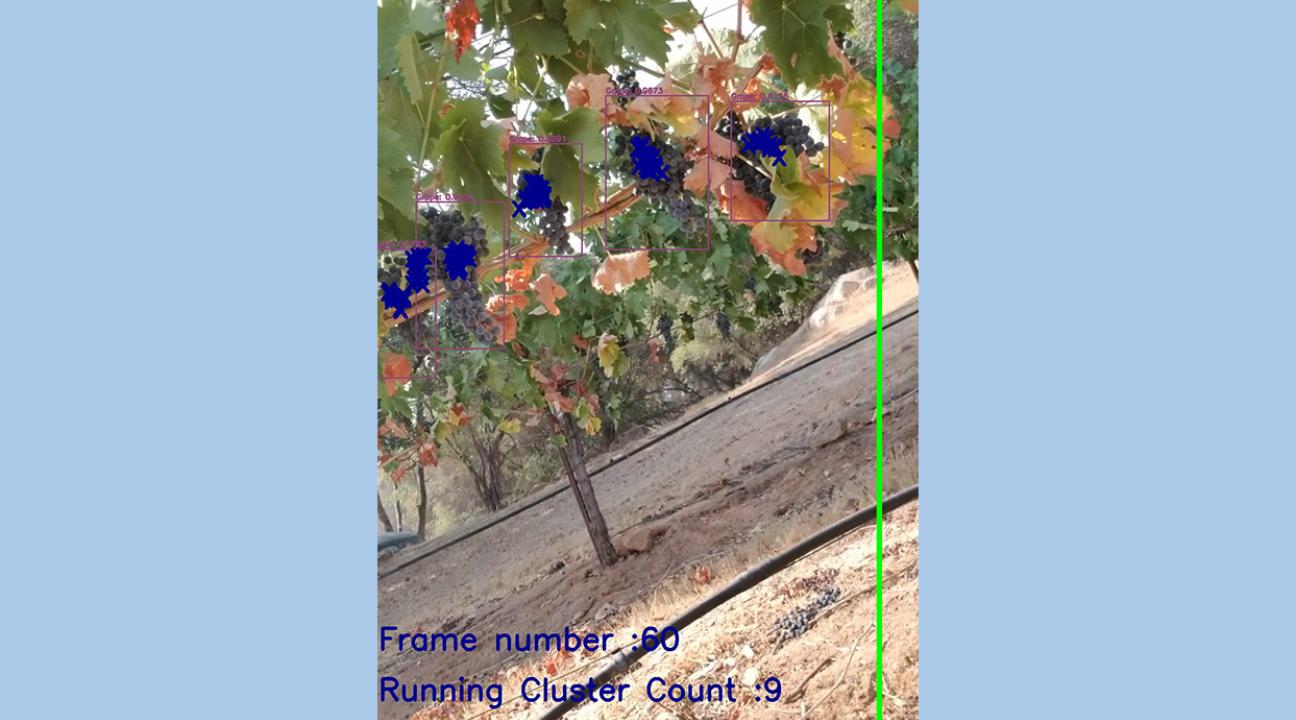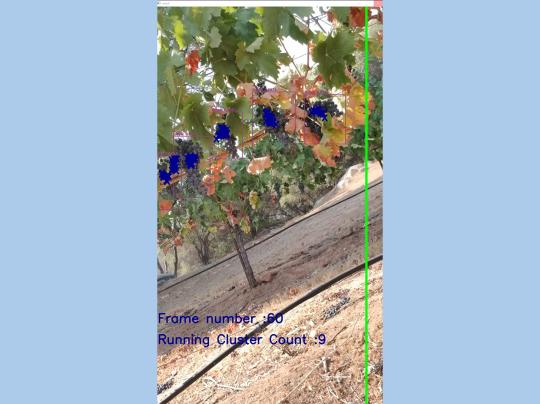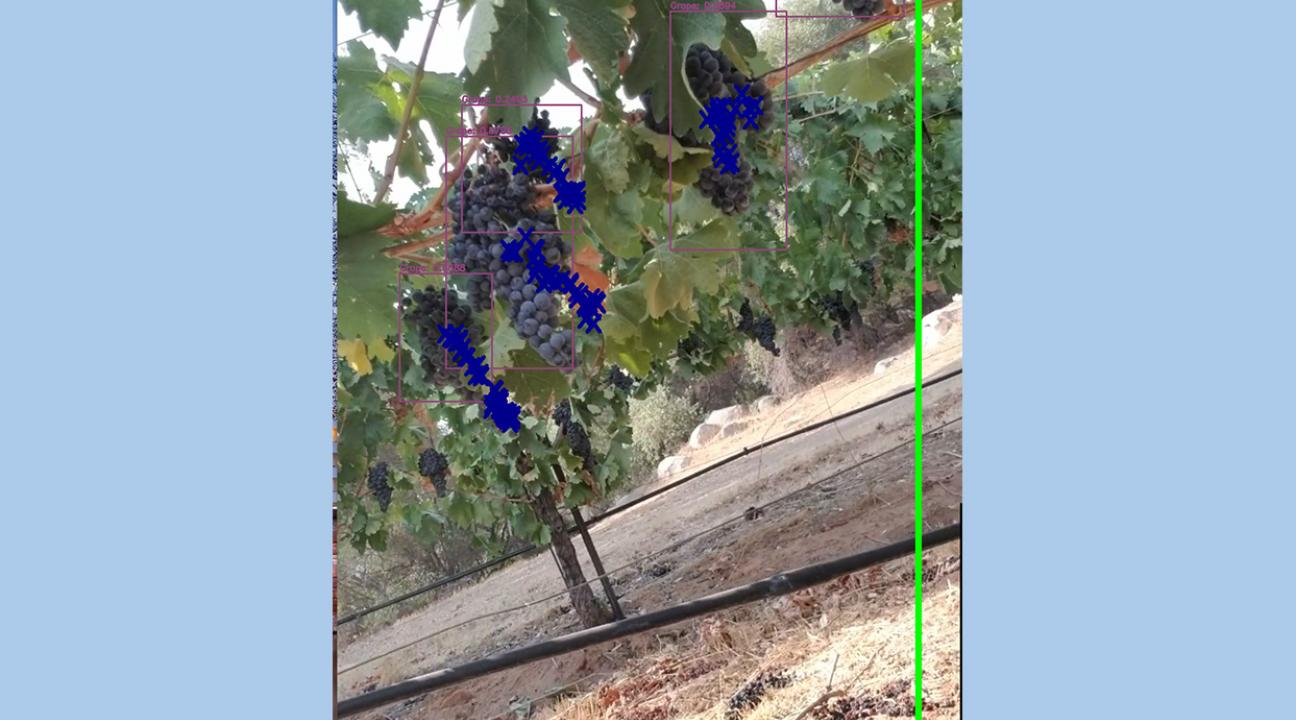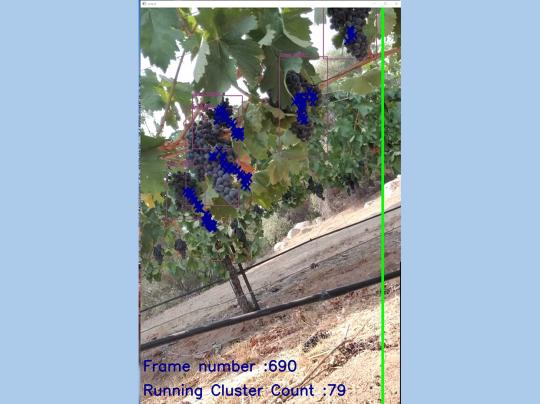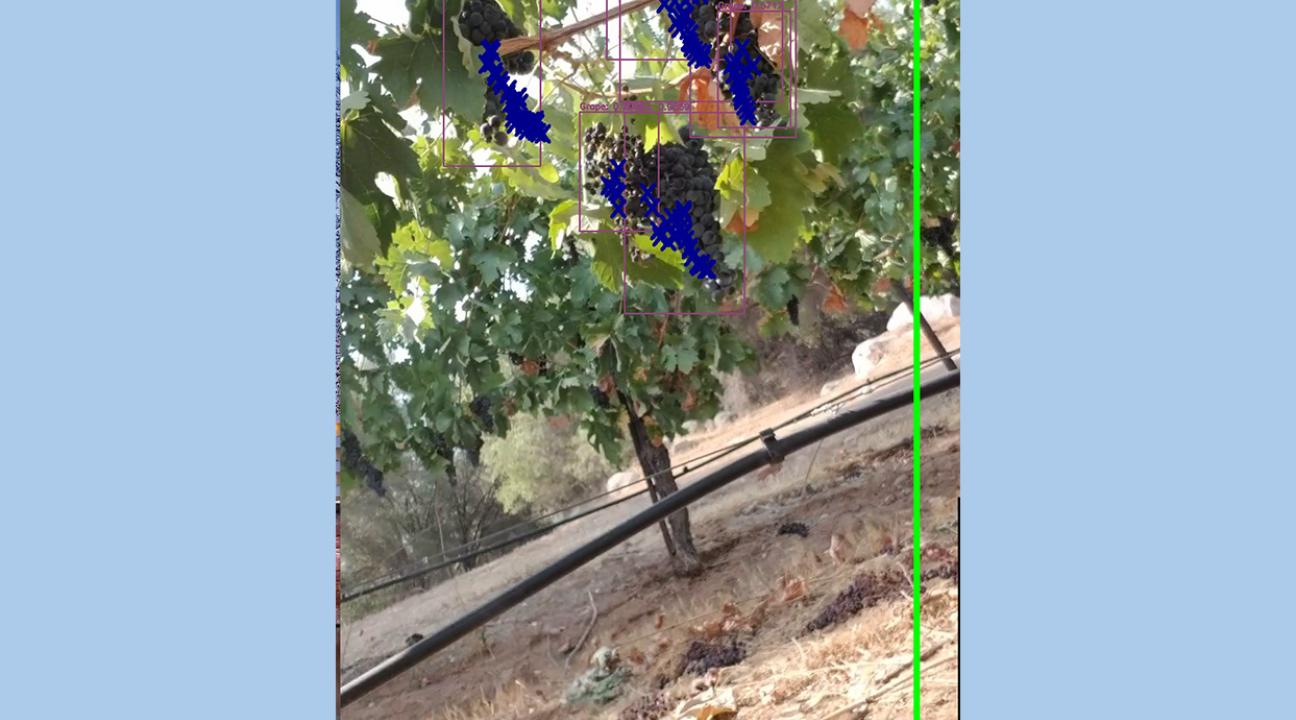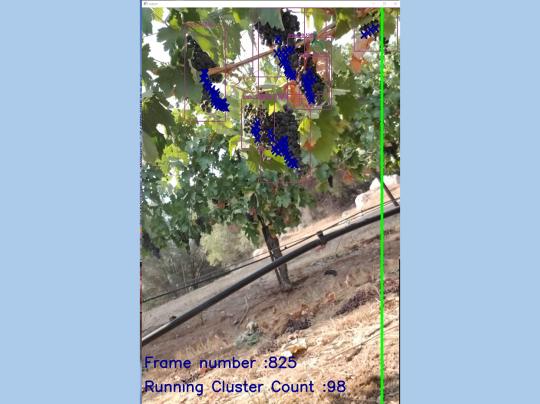Hello Vineyard!
Tired of walking through a vineyard to hand count your grape clusters, not knowing the exact number of bunches; therefore, lowering the accuracy of your estimated tonnage?
Electrical and Computer Engineering (ECE) graduate student Scott Parmley has been developing an artificial-intelligence-based rover that self-navigates through a vineyard using ultrasonic sensors and a global positioning system (GPS). In its current prototype, the rover counts clusters after navigating a vineyard, but with a stronger CPU this count will happen during navigation, as the software utilized is a real-time-object-detection algorithm, YOLO (You Only Look Once).
The rover is designed to help grape growers estimate yields better without having to count them with labor-intensive manual processes. Currently many vineyard managers are hand-counting a few rows, and then extrapolating the data to estimate their crop. You can imagine the downside of hand counting as it requires more time, money and manpower, and will be less accurate if only counting a few rows. This in turn will affect a growers ability to properly predict how much tonnage they could be expecting from a year's crop. The project is entitled, Autonomous Yield Estimator (AYE) and it is Scott’s Master’s project.
To summarize, this project involves developing and testing a semi-autonomous rover that can drive through a vineyard with minimal input parameters. Once it has finished driving through a vineyard, a grape estimate will be produced using a trained computer vision algorithm. This project was inspired by the Data Mining class that Scott took in Fall 2019. The class was taught by Dr. Shahrad Jamshidi, who is also an advisor to the project. Scott is graduating in May 2022 and hopes that one day the rover will help growers estimate their yields better, while increasing efficiency in vineyard practices.


